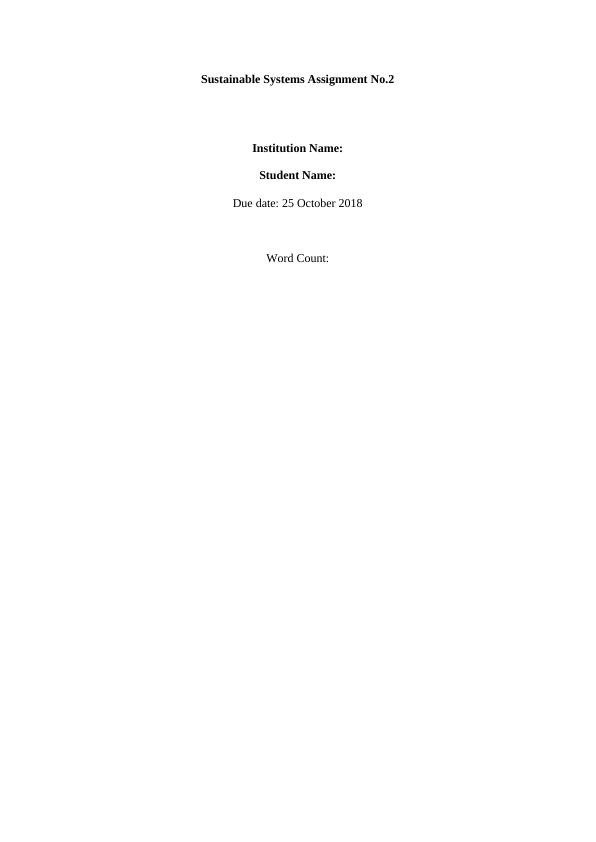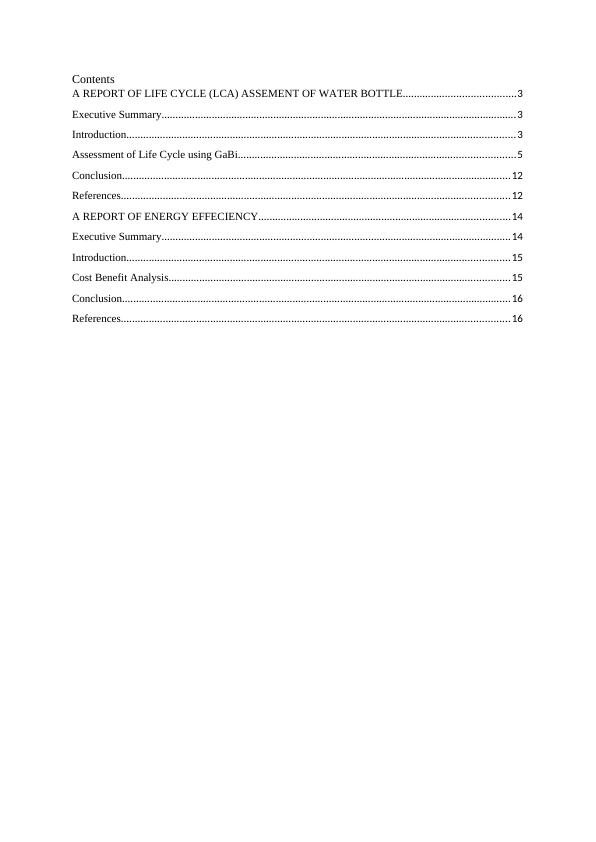Life Cycle Assessment of Water Bottle and Energy Efficiency Report
This assignment requires two separate reports on life cycle assessment and energy efficiency analysis. The first part involves conducting a life cycle assessment for a chosen service and presenting the findings in a report form. The second part involves analyzing the energy efficiency of the chosen service. The reports should include an executive summary, problem definition, methodology, results, and recommendations.
Added on 2023-06-04
About This Document
Life Cycle Assessment of Water Bottle and Energy Efficiency Report
This assignment requires two separate reports on life cycle assessment and energy efficiency analysis. The first part involves conducting a life cycle assessment for a chosen service and presenting the findings in a report form. The second part involves analyzing the energy efficiency of the chosen service. The reports should include an executive summary, problem definition, methodology, results, and recommendations.
Added on 2023-06-04
End of preview
Want to access all the pages? Upload your documents or become a member.




